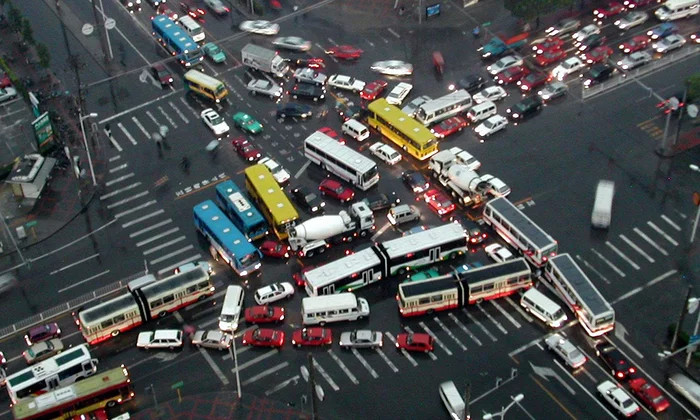China's Beijing capital is subsiding 11cm per year
New research through satellite images shows that many areas in Beijing, especially the commercial administrative center, are sinking to 11cm each year.
According to The Guardian, research on subsidence in Beijing is published in Remote Sensing and is based on InSAR, a radar that tracks changes in ground altitudes. The authors warn that prolonged subsidence will become a threat to the safety of the capital with more than 20 million people and the operation of the railway industry will be severely affected.
"Currently, we are conducting a detailed analysis of the effects of subsidence on important infrastructure such as high-speed rail in Beijing," the team said.

Chaoyang District in Beijing is the place where the strongest subsidence occurred.(Photo: EPA).
Beijing is located in the dry plain, where groundwater accumulates for more than a millennium. When the wells are drilled and the groundwater level drops, the soil beneath it solidifies like a dry foam. According to research results, the whole city of Beijing is subsiding but this phenomenon occurs most strongly in Chaoyang District , which began to develop since 1990 with a series of skyscrapers, ring roads and public works. other process. The team said uneven levels of subsidence in some places endanger other buildings and infrastructure.
Tens of thousands of wells are located in the inner city and around Beijing, most of which are used in landscape cultivation and beauty. The city government has enacted laws governing digging wells but not uniformly in implementation, according to Ma Jun, director of the Institute of Environment and Public Works in Beijing.
In 2015, China started a large-scale project to handle the water crisis in Beijing. The city government completed construction of a $ 65 billion North-South Water Transport project, set up a 2,400-kilometer network of canals and tunnels to lead 44.8 billion cubic meters of water into Beijing. In January 2015, Chaoyang district leaders announced plans to stop using 367 wells and reduce the use of 10 million cubic meters of groundwater.
Experts say it is too early to conclude that the canal project could fill the aquifer and reduce Beijing's subsidence. The impact of subsidence on buildings and railway systems continues to cause concern. A 2015 study suggested the Beijing government should ban new wells near high-speed rail.
Many cities in the world also face subsidence due to excessive groundwater extraction or other causes. Mexico City in Mexico subsided 28 cm / year and Jakarta and Indonesia are also experiencing similar subsidence rates.
- After 30 years, Beijing picked up snow again in April
- Beijing must change its way of measuring pollution because of pressure
- Air pollution in Beijing reached a record
- Beijing alarms on air pollution
- Beijing issued a red alert for the second time because of air pollution
- Beijing atmosphere at dangerous pollution levels
- Dust is gradually covering Beijing
- China: fog covering the capital, many flights are delayed
- Rare images return to Beijing more than 100 years ago
- The number of deaths due to heavy rain in Beijing amounted to 37
- Beijing 'heavy pollution', people go online to breathe
- Sandstorm reappears in China
 Is the magnetic North Pole shift dangerous to humanity?
Is the magnetic North Pole shift dangerous to humanity? Washington legalizes the recycling of human bodies into fertilizer
Washington legalizes the recycling of human bodies into fertilizer Lightning stone - the mysterious guest
Lightning stone - the mysterious guest Stunned by the mysterious sunset, strange appearance
Stunned by the mysterious sunset, strange appearance